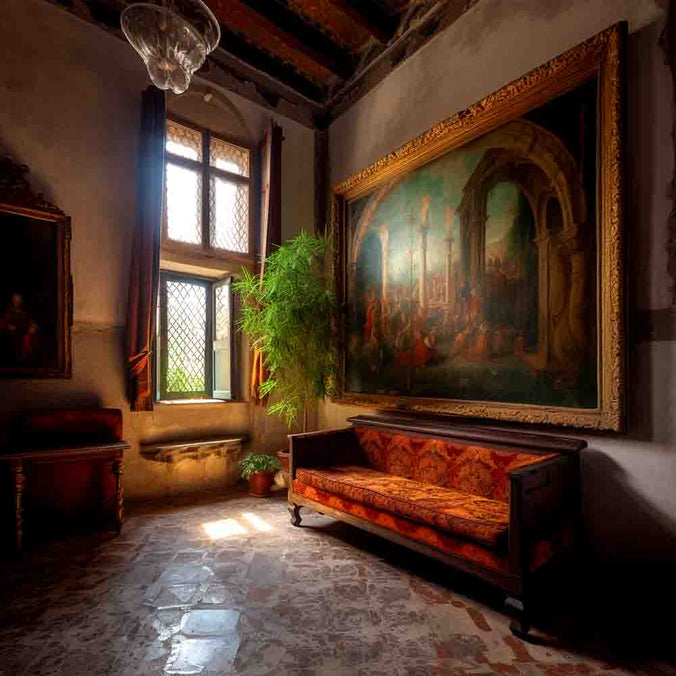Who Are the Most Popular Painters of All Time?

Who Are the Most Popular Painters of All Time?
The most popular painters of all time are colloquially considered to be Claude Monet, Pablo Picasso, Artemisia Gentileschi, Vincent van Gogh, and Pieter Bruegel. These artists revolutionized the art world with their innovative techniques and unique styles, inspiring generations of artists. Monet, the father of Impressionism, captured light and atmosphere in his landscape paintings. Picasso, a co-founder of Cubism, experimented with various styles and pushed the boundaries of art. Gentileschi, a trailblazing Baroque female artist, created powerful and emotional paintings using chiaroscuro techniques. Van Gogh, a Dutch Post-Impressionist, used expressive brushstrokes and bold colors to convey emotion. Finally, Bruegel masterfully depicted peasant life and landscapes in his paintings, often with allegorical and moral messages. These artists have left a lasting impact on the art world and continue to influence future generations. This article explores the lives and contributions of five famous painters in history.
Claude Monet: The Father of Impressionism
Claude Monet (1840-1926) was a prolific French painter who founded the Impressionist movement. His innovative technique of capturing light and atmosphere in his landscape paintings transformed the art world. Monet's most notable works include the Water Lilies series, Haystacks, and Rouen Cathedral.
- Techniques: Monet's pioneering technique involved using quick brushstrokes, vibrant colors, and capturing the fleeting effects of light and atmosphere. His penchant for painting en plein air (outdoors) allowed him to observe and capture nature more accurately.
- Influence: Monet's groundbreaking approach to painting has had a lasting impact on modern art. His techniques inspired many artists to break away from traditional styles and explore new ways of depicting their subjects.
Pablo Picasso: The Revolutionary Cubist
Pablo Picasso (1881-1973) was a Spanish painter and sculptor whose innovative ideas and versatility transformed 20th-century art. A co-founder of the Cubist movement, Picasso's influence can be seen in countless modern art movements and styles. His most famous works include Les Demoiselles d'Avignon, Guernica, and The Weeping Woman.
- Techniques: Picasso experimented with various styles throughout his career, from the melancholic Blue and Rose Periods to the radical Cubism, which involved breaking down and reassembling subjects into geometric shapes.
- Influence: Picasso's relentless pursuit of innovation has had a profound impact on the art world. His contributions to Cubism, as well as his explorations in collage, sculpture, and ceramics, have inspired generations of artists to push the boundaries of what art can be.
Artemisia Gentileschi: The Baroque Trailblazer
Artemisia Gentileschi (1593-1656) was a trailblazing female artist during the Baroque period. Despite facing numerous challenges in a male-dominated field, she gained recognition for her powerful and emotional paintings. Her most renowned works include Judith Slaying Holofernes, Susanna and the Elders, and Self-Portrait as the Allegory of Painting.
- Techniques: Influenced by Caravaggio's chiaroscuro technique, Gentileschi used strong contrasts between light and dark to create dramatic and emotional scenes. Her paintings often featured strong, independent female subjects.
- Influence: Gentileschi's perseverance and success in a male-dominated field paved the way for future female artists. Her powerful depictions of female subjects and mastery of chiaroscuro continue to inspire artists today.
Vincent van Gogh: The Tortured Expressionist
Vincent van Gogh (1853-1890) was a Dutch Post-Impressionist painter whose intense, emotive works have made him one of the most famous and influential artists in history. Notable works include The Starry Night, Sunflowers, and Café Terrace at Night.
- Techniques: Van Gogh's use of bold colors, expressive brushstrokes, and thick layers of paint created a sense of movement and emotion in his paintings. His exploration of color and form made him a key figure in the development of Expressionism.
- Influence: Van Gogh's unique style and approach to color have had a lasting impact on the art world. His paintings have influenced numerous artists and movements, including Fauvism, Abstract Expressionism, and Neo-Impressionism. Today, his work remains a testament to the power of art as a means of self-expression and communication.
Pieter Bruegel: The Master of Peasant Life

Pieter Bruegel the Elder (c. 1525-1569) was a Flemish painter known for his detailed depictions of peasant life and landscapes. His works often carry allegorical and moral messages, as well as subtle political undertones. Some of his most famous paintings include The Tower of Babel, The Peasant Wedding, and The Hunters in the Snow.
- Techniques: Bruegel's keen eye for detail and his ability to capture the essence of daily life set him apart from other artists of his time. He masterfully integrated elements of landscape, genre scenes, and religious narratives in his paintings.
- Influence: Bruegel's works have had a lasting impact on the genre of landscape painting and continue to inspire artists who seek to capture the beauty and complexity of everyday life. His use of allegory and moral themes has also influenced generations of painters, making him a significant figure in the history of art.
The contributions of these five renowned painters—Claude Monet, Pablo Picasso, Artemisia Gentileschi, Vincent van Gogh, and Pieter Bruegel—have left an indelible mark on the art world. Each artist's unique style, techniques, and influences have shaped the course of art history and continue to inspire future generations of artists. By understanding and appreciating their work, we can gain a deeper insight into the power and significance of art as a means of expression and communication.
Leave A Reply
Your email address will not be published. Required fields are marked *






